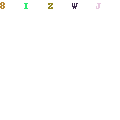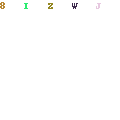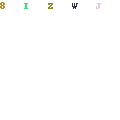Hello Joshua here,
 We are excited to Announce The Wise Prepper Show!
We are excited to Announce The Wise Prepper Show!
Michael Knight and myself will be joining you on your FM Dial at ?101.1FM on Saturday Nights from 8-9PM
We will be talking about getting prepared.
This will be a call in show! So you can call us with your questions and hopefully get sound answers that help you get more prepared for what is to come.
You can also Stream the show live on KXL.com or check back here the next day for the podacst.
From Our Friend DisasterDoc I wanted to share this post on norovirus because it made me rethink my plans about water purification, as well as emphasizing that hand washing is more important than hand sanitizing. I hear of people planning sanitizers for their go kits ? liquid antibacterial soap is probably a better bet!
I wanted to share this post on norovirus because it made me rethink my plans about water purification, as well as emphasizing that hand washing is more important than hand sanitizing. I hear of people planning sanitizers for their go kits ? liquid antibacterial soap is probably a better bet!
Excerpt:
?As Sheila?s ?guest author? today, let me introduce myself. I?m Nora, officially known as norovirus. People sometimes mislabel me as stomach flu ? a pet peeve. I?m not even related to influenza! If you can?t remember my name, at least call me ?acute gastroenteritis?, meaning a heck of a lot of vomiting, diarrhea, and abdominal cramping ? my specialty. I?m here today to tell you why I?m the best darned virus that ever lived ?from my perspective at least, although maybe not from yours!?
Keep Reading this great post at DisasterDoc?s Blog post?Meet Norovirus ? The Perfect Infection
Preparedness with Toddlers
Today?s guest article is again from Melissa H, thank you Melissa.
?
Introduction
Supplies in the home
Evacuation
Teaching and practicing
Introduction
This page focuses on toddlers. You may also find the discussion on babies to be of interest.
We?ll discuss vital supplies for the home, bare-basic supplies to take along in case there?s a need to evacuate, luxuries to make his little life easier in a rough situation, and training you can do as a family. There?s also a brief section of things your toddler may be able to learn for himself.
Supplies in the home
You already know what your toddler needs. For the most part, home preparedness just means having a bit more of disposable/consumable items. If you have a week?s worth of supplies at all times, you?re far ahead of most Americans. If you have a month?s worth, you?re doing great.
There are a few special considerations, though. Aren?t there always?
Diapering
The Preparedness with Babies page has a lengthy discussion of diapering. It applies to toddlers as well, except that you can get by with somewhat less in the way of supplies since your little tyke can hold his bladder longer. You may need as few as five cloth diapers, if you?re scrupulous about washing each one as soon as it?s wet. Figure out about how often he wets, do the math, and add another diaper or two for safety?s sake.
Since we are probably talking about a relatively short-term situation, perhaps 5-30 days, there?s no point in going nuts on the stocking up. If the situation does last longer, early toilet training is going to start looking better and better. And you might consider getting a potty for that reason, even if you don?t think he?ll be ready for a while yet. If nothing else, he?ll get used to seeing it around.
Even once your toddler is toilet-trained, keep some diapers around. In a stressful situation, he may regress. And when he?s four years old and you?re really sure, you can always give them to a younger child.
Food

MRE?s not so bad in kid bowls.. Keep Kid Bowls in your kit?
If your toddler can eat all the food you eat, you?re more or less all set. He can eat regular survival rations, beans and rice or whatever. Just be sure to make these things a regular part of your diet before the crisis arrives. With an older child you can say ?Enh, he?ll eat it when he gets hungry enough.? But the very young, like the very old, have been known to starve to death before eating unfamiliar food.
If your toddler still can eat only a limited selection of food, you?ll need to take that into account. Good old Cheerios, or the store-brand equivalent, are a staple for many toddlers in this stage. Cheerios can be vacuum-packed with a FoodSaver or equivalent, which will extend their shelf life from six months to eighteen months. After fourteen months or so you can just break the seal and add them into your regular pantry, since by that time your tyke will be able to eat almost all normal adult food.
Milk
Your toddler needs milk. He can?t get by on water, Tang, etc. as the adults may be planning to do.
Canned milk is one option. Its shelf life is surprisingly short compared to most canned foods, but of course is much longer than fresh milk.
Canned formula is another option to consider. It lasts longer than canned cow?s milk, but is more expensive.
Powdered milk is the best choice for many of us. It?s relatively cheap. Some grocery stores sell it in vacuum-sealed foil packets which last a fair while, or you can buy in bulk and seal your own packets.
Whichever option you choose, you?ll need to rotate fairly often. Only the canned formula is really long-lasting, and it?s too expensive to store in large quantities. But rotating the milk is good not only to keep stored supplies fresh, but because it?ll give your tyke a chance to get used to it before the need arises.
Evacuation
Here are some suggestions for special toddler evacuation supplies, along with a list of general toddler supplies which should go into his evacuation kit.
Toddler Backpack
Your toddler can?t walk very far or very fast or with very much direction, so he still needs to ride. You need a toddler backpack, in case the family has to evacuate on foot. We use the Madden Caravan; you can read a detailed review on good old Epinions. We concluded that this brand was the best, but there are other good ones too.
The Caravan has a section for carrying gear. It also has a separate little detatchable backpack which your toddler can wear, if your little tyke is old enough to do parts of the hike himself, or which can be attached to the main pack. It?s surprisingly capacious, though you?ll need to watch weight closely if he?s to carry it himself at all. He may need to do parts himself if the hike is long, since there?s a limit to how long most toddlers can sit still. Of course he doesn?t necessarily need to wear the pack just because he?s walking.
In our family, the plan is for my husband to wear the Caravan with our son in it. I wear another hiking pack with most of our gear in it. Since I?m carrying almost all of the gear for three people, we must be very selective in our choices and extremely careful about weight.
 Our son doesn?t actually use the little pack on recreational hikes, so I keep it pre-filled with his evacuation supplies. Although the non-toddler-carrying parent has the bulk of the supplies, I figure whoever has the actual toddler also needs some immediate supplies for him. If we get separated for any reason, there?s no sense in one of us having a hungry toddler while the other has all the food. For that reason I keep his little pack filled with most of his evacuation supplies. If and when we need to go, we?ll just strap it on to the Caravan.
Our son doesn?t actually use the little pack on recreational hikes, so I keep it pre-filled with his evacuation supplies. Although the non-toddler-carrying parent has the bulk of the supplies, I figure whoever has the actual toddler also needs some immediate supplies for him. If we get separated for any reason, there?s no sense in one of us having a hungry toddler while the other has all the food. For that reason I keep his little pack filled with most of his evacuation supplies. If and when we need to go, we?ll just strap it on to the Caravan.
When he is a little older and wants to use his little pack on family hikes, I will transfer his emergency supplies to one or two gallon-sized freezer bags which can quickly be tossed into his little pack when it?s time to evacuate. This is the same approach I use with our dog.
You can also use this approach if the pack you choose doesn?t have a little detachable pack. Just pack the gear in some other small sack, and toss it into the backpack?s own gear compartment before leaving your house.
Evacuation supplies for toddlers
Here?s what?s in my son?s little pack. Perhaps you can use it as a starting point for your own pack.
Four paper (disposable) diapers, protected in a large freezer bag
Paper diapers are great when there?s little leisure to putz around with diaper changes.
Two cloth diapers and one cover, protected in a large freezer bag
Cloth diapers are vital because they can be washed and used again, or at least air-dried and used again.
A small freezer bag of disposable diaper wipes, about twenty
They?re good for general wiping off as well as for diaper changes.
A waterproof changing pad, so he doesn?t get bark in his undies
The changing pad can double as a sleeping mat, to protect him from the cold wet ground should things be so bad that he and Dad are stuck sleeping in the woods without access to my pack of supplies. It?s also intended to be used as a bed for our dog, so she won?t have to sleep on the cold wet ground.
One ?take and toss? semi-disposable sippy cup and four 4-oz. plastic bottles of juice, in a large freezer bag
Those take and toss cups are great. You can get a six-pack of them cheap at the grocery store, and they?re quite light while also being reasonably sturdy. If your child can?t drink from any other kind of cup, pack two.
Some Gerber Biter Biscuits for emergency snacking, in their own wrappers
The Biter Biscuits are primarily marketed for teething babies, but they?re good for this purpose because they keep a long time and he can munch one while continuing to ride in his backpack. Just be prepared for the fact that they make a dreadful mess.
Four cups of Cheerios
I vaccum-packed them, which decreases their bulk and extends their shelf life from six months to eighteen months. They were four cups originally, but the packed volume is perhaps two and a half cups.
A complete change of clothing
Clothing should be rotated as appropriate for the season, or should be layerable.
A nasal aspirator
Useful if he gets a cold, as is not unlikely in evacuation circumstances. Also useful if he?s crying and you need to clap a hand over his mouth to silence him.
A bottle of water
That?s really for my husband, but our son can have a drink to fill his tummy if he drinks all his juice before we reunite.
If your toddler still uses bottles, or gave them up only recently, then you might want a bottle instead of the sippy cup. A crisis-provoked bugout is no time for the tot to have to learn a new skill. Similarly, even if your toddler is toilet-trained, it?s probably wise to bring some diapers along.
The main pack, worn by me, contains more food and some powdered milk. His own pack should get him through a night if necessary; the main supply pack should get him through three days or more if we keep the cloth diapers usable.
Evacuation luxuries
If you have the good fortune of evacuating by car, you can afford to carry more gear. Most of the baby luxuries discussion applies to toddlers as well. If he still sleeps in a crib, the emergency crib described there will work well.
You can keep these luxuries in a large bag or two (I use two king-sized pillowcases), so that they can easily be slung into the car when needed. The sacks can stay in your shelter-in-place room most of the time, where their contents will be useful if you ever need to shelter there.
Your toddler doesn?t need formula, but he can use extra food and some juice, canned milk (and a can opener!) or powdered milk, and an extra ?take and toss? sippy cup or two.
Toddlers, like babies, can make use of some toys and stuffed animals and books.
Bring a toothbrush and toothpaste, and a set of pajamas. Sticking as closely as possible to his usual bedtime routine will help him feel safe.
If he has a ?lovey? toy that he just can?t get along without, you?ll have to remember to toss it into the car along with your prepacked bags and the playpen. It?s good to have a list of stuff you want to do before moving out, so that you don?t forget anything in a crisis.
Teaching and practicing
A young toddler is like a baby in many respects. He?s unlikely to remember disaster instructions, much less be able to implement them in a crisis. But an older toddler, or a preschooler, can learn. He?s much too young to be responsible for his own safety, but he can learn simple instructions and practices that will make things easier.
Only you know whether or not your child is ready to learn any of these things. Many toddlers won?t be. But it?s worth trying, isn?t it? And if he doesn?t get it, you can still bear these things in mind to try again a bit later.
?Freeze!?
One fun game is ?freeze.? When someone says ?freeze,? everyone (speaker and all listeners) freezes in place and falls totally silent. They remain this way until the person who called a freeze says ?OK? or begins moving/speaking; either of those things means that the freeze is over.
First it?s a fun game in the home, where he can enjoy his newfound power over Mommy and Daddy. Then you can practice in situations like a supermarket, where he isn?t expecting it in advance. Once he gets the idea, be prepared for him to bark ?Freeze!? at you constantly until he gets tired of it. Don?t worry; he will.
Whistle signals
You can get a nice loud whistle for each member of the family. Each members? signal is his/her first initial, in Morse Code (if members share initials then obviously this will have to be diddled a bit, but that?s OK).
If your older toddler gets separated from you for any reason, he is to stand still and blow his whistle signal. You will find him.
Again, practice in nonthreatening situations. Hide around a corner and have him blow his whistle, then reappear immediately. Then try it out of your home, in a mall or in the woods. Then tell him you?re going to start adding a small delay (to represent the time needed to find him in a real crisis), and do so very gradually. He just blows his whistle signal until you appear.
This has obvious applications in any crowded public situation as well as in survival situations, if the family would like to carry its whistles everywhere.
For the youngest member, the whistle should have a breakaway lanyard so that he can?t accidentally strangle on it if it catches on a branch while he?s in his backpack. Sewing thread would do ? it?s strong enough to hold the whistle?s weight, but not strong enough to hold the toddler?s weight. Or you can just pin it to his clothing with a safety pin, and a sturdier cord long enough to reach his mouth.
?Kiss your knees?
Some day care centers teach the kids to crouch on the floor in the traditional tornado position upon hearing the command ?kiss your knees.?
-Melissa H.

Click here Check out our Channel
Hey! Did you know! We have a great YouTube Page, We have been updating our YouTube page with a lot more videos, but did you know we have playlists on YouTube of other great videos and channels.
We are working to bring you all kinds of great information from other great organizations?and companies about getting prepared and about great products that are on the market.
This week on YouTube I found a great video that offers?Emergency Preparedness tips in Sign Lanquage..
?
Wow That?s really great! Here is another great video from the Portland Bureau of Emergency Manamegement where Director Merlo talks about things she does around her house to get prepared.
Coming up in Portland
March 21st :?Seismic Strengthening Class?Multnomah Arts Center, 7688 SW Capitol Highway, Portland, OR 97219

badminton Dominique Dawes Gabby Olympic Gymnast Robyn Lawley Gore Vidal mlb trade rumors Misty May And Kerri Walsh
No comments:
Post a Comment
Note: Only a member of this blog may post a comment.